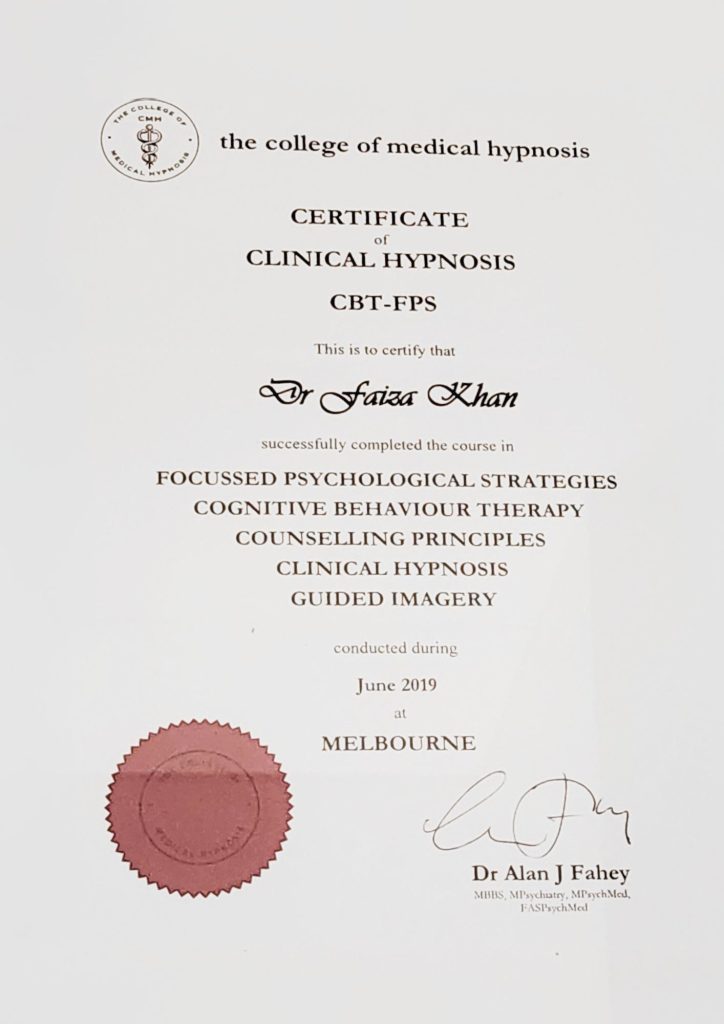Clinical Hypnosis: Separating Fact from Fiction
*’Will I tell you my secrets, Doc? I’m uncomfortable with that…’*
*’Will I lose my mind? I don’t want to do something idiotic like cluck like a chicken or run around naked…’*
*’What exactly will you do to me?’*
*’Will I be unconscious?’*
These are just a few questions that my patients have asked me, often with great hesitation or awkwardness when enquiring about clinical hypnosis or hypnotherapy. There are a great deal of assumptions and incorrect beliefs about hypnosis and since I’m referring to it in the context of therapy, I’ll call it clinical hypnosis.
Hypnosis is not when you fall asleep with your mouth open, drooling like a fool or running around like you’ve been possessed!

A Brief History of Hypnosis
Hypnosis has been used in medicine for centuries and used across many cultures for thousands of years. ‘Hypnos’ was the Greek God of sleep, hence the term hypnosis.
Mesmerism was a term coined after a physician called Mesmer in the 1700s who would help his patients by teaching them how to harness their imaginative skills effectively.
Hypnotherapy has been used very successfully for reducing pain in operative procedures as well as during birth (hypnobirths).
*[I have used hypnotherapy on a few of my patients who requested it during insertion of IUDs (Intrauterine Devices) and they reported minimal to no pain during the procedures.]*
Self-hypnosis is also something we can all do by learning to speak to ourselves in a more positive and mindful way.
Interestingly, a phenomenon called conversational hypnosis happens all the time. I’m certain we can all recall moments when listening to someone explaining something or discussing an issue suddenly helps us make sense of it all – ‘it clicks into place!’
What is Clinical Hypnosis?
Clinical hypnosis is defined as the therapeutic skill that induces the person (with consent and explanation) into a state of deep relaxation where their focus of attention is heightened (Hammond 1998). This state of relaxation that is often described as a ‘trance-like’ state is a very normal and frequent phenomenon we have all unknowingly experienced several times in our day-to-day lives. Therefore, it is very safe in the hands of a trained clinician.
Try recalling the times when you pull up in your driveway and realise you have almost no recollection of the drive home. What about the times when you have cooked an entire meal yet can’t remember the process at all? There are times when you have been in deep conversation with someone and you find it hard to believe that hours have flown by.
These ‘autopilot’ moments are examples of that trance-like state which is utilised in the therapy setting to ‘tap into our subconscious.’
Why Access the Subconscious?
Why is that necessary? You must have heard how people say, ‘I want to start exercising and I’ve even got myself a gym membership, but I can’t last for more than a week. Now I feel like a fool for wasting my money, and I’m still struggling to go!’
In this scenario, the intention and willingness seem to be there and the person even tried to fulfil that by paying for the membership. Yet, sadly, the paid membership doesn’t make one a gym-goer. Clinical hypnosis can be very effective to help someone become physically active instead of relying on the paid membership fee alone.
There are clearly barriers and factors that come in the way of choices like these and they lie in the realm of our subconscious mind! This is that rich and extremely intriguing creative domain of our minds that impacts conscious choices we grapple with on a constant basis.
How Does It Work?
A script is used that is tailored to the individual patient in most cases after a detailed history and assessment. This script is used to challenge the barriers and impeding factors and reinforce the patient’s own strengths and confidence in doing so.
The hypnotic suggestions given in the trance-like state are reinforced with specific cues that elicit affirmation of those suggestions outside the therapy room too. These can be used to help with any issue that the person has come to address, e.g. smoking cessation, alcohol abuse, anger management, relationship issues, phobias, pain management etc. The clinicians use a technique called ‘hypnotic anchoring’ during the hypnosis stage to facilitate the desired behaviour or change.
Can Anyone Be Hypnotised?
Yes. The level of relaxation or the intensity of trance-like state one achieves would vary from person to person, but the hypnotisability of the person is strongly linked to their willingness and intention to bring about the desired change and not how ‘strong’ their mind is. In fact, strength of mind is a huge advantage for a successful outcome for clinical hypnosis.
Do You Need Multiple Sessions?
Each situation, issue and person is different, however with tailored scripts and a high patient motivation and commitment factor, sometimes one session can also lead to a successful outcome.
I saw a patient who wanted to start vaping to stop smoking and after discussing the pros and cons of both, helping him understand his goals and expectations, I recommended him to book a hypnotherapy session with me. I went through the explanation of what it entailed and what he could achieve with it and he showed a desire to work with me. When he didn’t book I thought he must have changed his mind or something else would have come up. Months later I saw him again for an unrelated issue and casually asked if he was still interested in booking the hypnotherapy session. I was pleasantly surprised by his response. He said, ‘I walked to the car after our long chat and chucked the packet of cigarettes in the bin straight away. I was done with that shit, Doc.’
